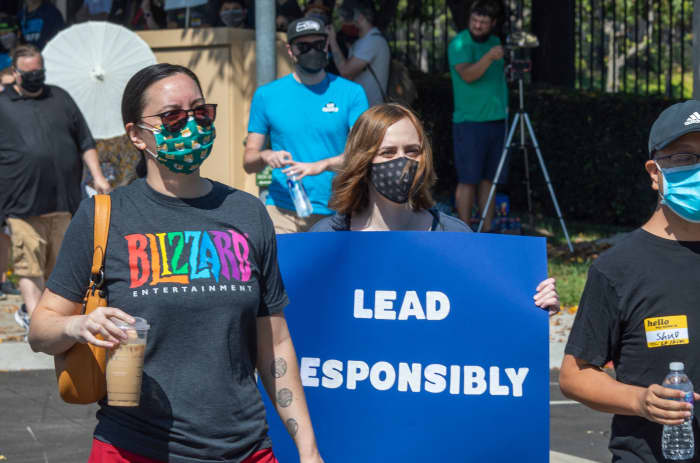Shari Rudavsky, Indianapolis Star
Thu, January 20, 2022,
An Indiana lawmaker has proposed a bill that would open the door for the use of a controversial medicine to prevent and treat cases of COVID-19.
Under House Bill 1372, a doctor or advanced practice registered nurse could write a standing order for ivermectin, an anti-parasitic drug, that would allow pharmacists to dispense the drug. The legislation also stipulates that the pharmacist must not provide information that discourages using ivermectin to treat COVID-19.
Approved to treat infections caused by worms, ivermectin has gained popularity in some circles as a prophylactic treatment against COVID-19. The Food and Drug Administration, however, says that ivermectin should never be used to treat or prevent COVID-19 and says that its incorrect use has required some to seek medical treatment.
But others believe that many doctors are overlooking ivermectin’s potential as a therapy for COVID-19.
"The risks are low and the potential gains are high,” said Rep Curt Nisly, R-Goshen, the bill’s author, in an emailed statement. “Why wouldn't we make this available, especially if we want Hoosiers to stop using horse paste. Hoosiers should be able to care for their health safely and effectively."
COVID-19 cases: Indiana schools buckling under weight of eye-popping new record
Some people who have been unable to get a doctor's prescription for ivermectin have opted instead to self-medicate, using medicine designed for horses and cows rather than humans.
Noting that the drug is available over the counter in some countries, Nisly cited Wisconsin physician Pierre Kory, who has said that a treatment that includes ivermectin could reduce COVID-19 deaths by about 75%. Kory himself later contracted COVID-19 though that did not shake his belief in ivermectin.
At this point, Kory is an outlier in the medical community. Both the government and major medical groups are warning against its use and ivermectin-related poisonings skyrocketed in 2021.
The bill also protects any health care provider who prescribes ivermectin from disciplinary action for doing so. The Federation of State Medical Boards in a statement last summer issued a thinly veiled threat that doctors who spread misinformation about COVID-19 are risking disciplinary action from their state medical boards. At least one Washington State physician assistant had his license suspended after he promoted the use of ivermectin.
While the bill has been assigned to the House Committee on Public Health, at this point it looks unlikely to advance.
'Everyone is so tired': Inside IU Health Methodist as it is overwhelmed by COVID patients

Some people are ingesting these two horse dewormers that contain the controversial drug ivermectin as a prevention against COVID-19.
Both the Indiana Pharmacists Association and the Indiana State Medical Association decried the bill as “dangerous,” particularly the part that would prohibit providers from discouraging patients from using the treatment.
“Pharmacists, and all health care professionals, should be free from government interference in the professional advice they provide patients,” the Indiana Pharmacists Association’s executive vice president Darren Covington said in an email. “This bill would set a dangerous precedent by having the government substitute its own medical advice for that of a trained, health care professional. “
In a similar vein, ISMA President Dr. Elizabeth Struble said in an emailed statement that she found the proposed legislation concerning.
“A health care provider prescribing an unproven therapy can be dangerous for the health of Hoosiers,” said Struble, a family practice physician with the Lutheran Health Network in North Manchester: What’s even more dangerous is legislating the creation of a very broad standing order mechanism so pharmacists can freely dispense an unproven therapy, preventing patients from receiving accurate information about the risks of that unproven therapy and insulating the health care providers who facilitate patients receiving this unproven therapy.”
Some ivermectin supporters have tried other avenues to access the drug. In September a woman sued Ascension St. Vincent, asking the courts to intervene and require the doctors to prescribe ivermectin for her mother. A few weeks later she dropped the suit after her mother started improving without the drug.
'An extraordinary disruption': Hoosiers struggle as COVID shutters schools and businesses
Nisly also pushed unsuccessfully to end Gov. Eric Holcomb's orders to close many businesses during the initial year of the COVID-19 pandemic and pushed to limit the governor's authority in such emergencies.
He was one of two lawmakers who declined to wear masks during the ceremonial start of the 2020 legislative session at the Statehouse before vaccines were available. At the time, all Hoosiers were under an order from the governor to wear masks when in public spaces, though the governor said he did not have such authority over lawmakers at the Statehouse.

















